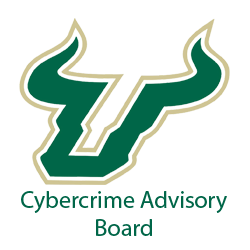Insider Threat Mitigation
What is Insider Threat?
According to the Carnegie Mellon University, Software Engineering Institute:
“Insider Threat is defined as the potential for an individual who has or had authorized access to an organization’s assets to use their access, either maliciously or unintentionally, to act in a way that could negatively affect the organization.” Insider Threat can be classified into two categories, negligent and malicious activity. While negligence is preventable through proper training, maliciousness is entirely another story. It is something that is built up over time, often with months or years of erratic behavior leading up to the criminal activity. Insider Threat has everything to do with placement and access. As such, it is important to not solely rely on technical solutions, but also training, and evaluation of anomalous behavior.
The Crisis of Insider Threats
Otherwise, to be considered a dishonest employee. These range from those you’ve hired becoming dissatisfied with your working environment and taking their ‘revenge’ against your corporation, or simple opportunists who seek financial gain through selling your secrets. In fact, these individuals could possibly, frighteningly enough, be purposely placed there by criminal groups to steal information. These individuals are also, by far, one of the most dangerous for your company – as you’d rarely expect a trusted employee to be the source of leaks.
Insider Threats: A Malicious Insider
Technology can play a significant role in protecting your business from bad actors, but technology alone can not provide your organization with sufficient  protection from cyber-attacks and data breaches. Cybersecurity awareness training courses, programs, newsletters, lunch and learn sessions, and campaigns can assist in keeping employees and agents of the company up to date on the tactics of criminals who seek to undermine your company’s security by manipulating the ‘human factor’.
protection from cyber-attacks and data breaches. Cybersecurity awareness training courses, programs, newsletters, lunch and learn sessions, and campaigns can assist in keeping employees and agents of the company up to date on the tactics of criminals who seek to undermine your company’s security by manipulating the ‘human factor’.
Having the right technology in place is important but focusing on your people and making them aware of the tactics bad actors employ to gain access to secure data is the best defense against cyber criminals.
Insider Threats: Architectural Weaknesses
Another potential issue could be weaknesses in your coding architecture that leave you vulnerable to cyber-attacks. Many companies are regularly tested by hacking experts to seek out any potential weaknesses, and this is something to keep in mind before you decide to forego a systems expert. There are terabytes of login information, credit cards, business transactions, that have leaked from networks, and all are still on the internet at large from careless companies failing to vigorously check their architecture for gaps in their defenses. Likewise, there are also many news articles detailing the lawsuits that follow such losses.
Phishing or Ransomware Scamming
What isn’t likely known by the common man is that, instead of an expert hacker worming his way into a system with clever coding… Many instead, will target the humans of the company itself to gain access. According to a 2021 report, upwards of 90% of information technology specialists have revealed their systems were attacked using this method. Phishing and Ransomware are usually successful when employees with access to the main systems are not given adequate training on these threats.
Negligence
Strict guidelines, security details, and more might create inconvenience for employees – who in turn might decide to forego guidelines out of false confidence and an impression that ‘nothing bad will happen’. One such issue is, of course, an employee using the same password across many different online accounts, which poses a much larger risk of their details being found in a leak.
Regardless, whether through malicious intent or simple negligence, your own employees might pose as much or more of a risk to your company’s security as an intruder sneaking into the building – diligence and frequent inspection of your systems is recommended for maintaining the health of your data’s safety.
Insider Threat Awareness Training
When many business owners hear “insider threat,” they envision the wrong thing. Our imaginations wander to corporate espionage and malicious actors. Because  we know and trust our employees, that is often where the thinking stops. Even if your employees would never knowingly put your business at risk, they may still be a threat. Even worse is having employees who cannot recognize what an insider threat looks like. This makes them just as likely to put your business at risk. This is why Insider Threat training is vitally important.
we know and trust our employees, that is often where the thinking stops. Even if your employees would never knowingly put your business at risk, they may still be a threat. Even worse is having employees who cannot recognize what an insider threat looks like. This makes them just as likely to put your business at risk. This is why Insider Threat training is vitally important.
The thing about insider threats is that you can’t eliminate them by installing new tools. Negligence is just as dangerous as malicious intent, and sometimes more so. So, when training to mitigate insider threats, it pays to focus more on eliminating negligence. An attentive workforce will also help minimize malicious actors inside the company.
What Behaviors Constitute Internal Threats?
Some well-meaning employees make mistakes. Mistakes may be part of life, but most security mistakes are completely avoidable and the result of careless behavior. For example, sensitive information should never be mailed out to the wrong person. Employees should also never fall for phishing sites or use work computers to visit potentially malicious websites. Unfortunately, some attitudes are also dangerous.
For example, say you have a policy that employees never reuse passwords. This is a good policy, as it limits the effective scope of a data breach. However, an employee might find it inconvenient and decide to ignore it. The disabling or bypassing of other “inconvenient” programs or features can also factor in. Weak passwords, installing foreign software, and using unsecured networks are all behaviors that must be avoided.
Why is Insider Threat Awareness Important?
The risks presented by insider threats are severe. After all, your employees have access to your most sensitive and important data. You could lose money, reputation, and even face liability if this information leaks. Furthermore, employees aware of cybersecurity standards can prevent problems far in advance. They can support your efforts by aiding in monitoring and oversight. By the same token employees familiar with risky behavioral indicators may be able to stop a potential threat through reporting. Knowing what to look for and how it can affect the company is something every employee should know and take part in.
An engaged employee is more likely to be alert and responsible. They may even detect lapses in your security that can be further improved. By training your employees to recognize internal threats, they become security assets rather than liabilities.
How to Improve Insider Threat Awareness
One of the first things you should consider is that today’s threats will not be tomorrow’s threats. Therefore, this threat awareness training needs to be ongoing and customized to your business needs. Therefore, you should document your scope, purpose, and desired outcomes. This will help you identify which methods to use for which groups in your organization.
To expand on our point about engaged employees, making the training fun can go a long way. A boring training course will get blown off. However, one that uses real-life examples, statistics, and an engaging review system will have far more success. Don’t get too bogged down in testing, though. A far more engaging and educational method to test your program is to conduct mini attack exercises.
Sending phishing emails or running physical penetration tests will help you identify which employees are absorbing the material. If you’d like to start your insider threat training, contact us today. Arruda Group can help develop a savvy, threat-aware culture in your workplace.
Insider Threat Training
As former Counterintelligence Agents, FSOs, and founding members of SOCOM’s Insider Threat Working Group (ITWG), we understand from both a policy and national security perspective what needs to be included in a comprehensive Insider Threat Training Program.
Insider Threat training is a requirement for cleared defense contractors and government agencies to pass the DCSA Assessment and Authorization (A&A) process, formerly the Certification and Accreditation (C&A) process.
An effective and comprehensive training program should first and foremost illustrate the threat, provide easy to understand real world examples, organizational factors that increase the threat, behavioral indicators of wrongdoing, reporting requirements, who and where to report to, and potential mitigation procedures. Our programs are individually designed to meet your organization’s specific needs.
Please contact us to discuss your organizations specific requirements.




